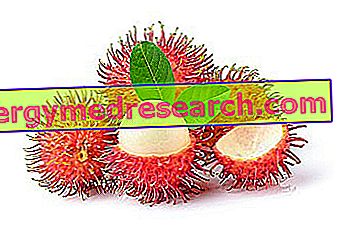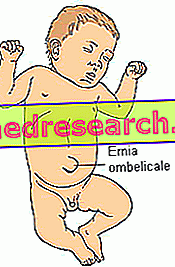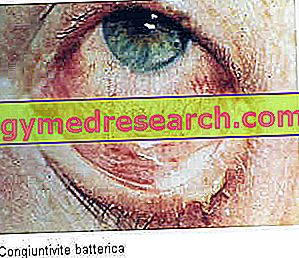Generality
In common parlance, the term infarct refers to necrosis - hence to death - of heart muscle tissue; for this reason it is more correct to speak of myocardial infarction .

Causes
Thrombosis and Atherosclerosis
In most cases, myocardial infarction is due to the thrombosis of a large coronary branch, secondary to an atherosclerotic process. In this regard, we remind you that the coronaries are vessels that provide blood circulation to the myocardium and that the correct flow of oxygen and nutrients to the heart depends on their integrity.
Atherosclerosis is a progressive disease, characterized by the slow formation of plaques (atheromas) in the arteries. These plaques, consisting mainly of lipids and white blood cells, can rupture giving rise to a clot, which suddenly increases the atheroma volume and limits the blood supply (occluding thrombus). If this phenomenon affects a coronary artery, insufficient blood flow drastically reduces the supply of oxygen and nutrients to myocardial cells, which die within a few hours and are replaced by non-contractile scar tissue. The damage is therefore irreversible.
The degree and duration of obstruction determine the severity and consequences of myocardial infarction . For this reason it is important to be able to understand the symptoms and promptly alert health workers if they occur; the blood clot, in addition to spontaneous fibrinolysis phenomena, can also be dissolved by specific thrombolytic drugs, which for obvious reasons must be administered as early as possible.
Embolism
Sometimes, even if more rarely, it can happen that a fragment detached from an atherosclerotic plaque - driven by the blood flow - ends up enclosing a coronary branch; in these cases we speak of embolism, which can also be caused by bacterial endocarditis.
Coronary Spasm
Another minor cause of heart attack - relatively common among cocaine addicts - is the violent spasm (contraction) of a coronary artery, which interrupts blood flow to a part of the heart. Thrombosis and spasm can, however, coexist and influence each other.
Classification
Almost all infarcts hit the left ventricle and can be distinguished into two different types, called respectively:
- transmural myocardial infarction : ischemic necrosis affects the entire thickness of the ventricular wall;
- subendocardial infarction : ischemic necrosis affects the innermost layers of the ventricular wall
Insights on the Infarct
Infarct Symptoms Infarct: How to Recognize It and What to Do Infarct Symptoms in Women Risk Factors Infarct ComplicationsDiagnosisDrugs and Treatment Infarction Medications Coronary, Coronary Artery Disease Ischemic Cardiac Angina pectoris Post heart failureInfarct symptoms
To learn more: Infarct symptoms
The signs of cardiac infarction may appear suddenly or - more commonly - in a rather mild and nuanced manner in the hours, or even days, immediately preceding them.
Sometimes - especially in diabetics, the elderly and those who have undergone a heart transplant - the infarct may occur in a completely asymptomatic way (about 25% of cases); in other situations it can arise abruptly and dramatically causing sudden death. In the same way myocardial infarction can affect perfectly healthy people or angina subjects, in which transient cardiac ischemia causes constrictive thoracic pains aggravated by physical efforts and relieved by rest (see dedicated article: angina pectoris).
In general, however, the greater the number of typical infarct symptoms experienced, the greater the chance of having actually been affected by a heart attack. Let's see a short list of symptoms typically associated with a heart attack:
- pressure, discomfort, discomfort or oppressive pain in the center of the chest (as if this were gripped by a vice or was under a boulder), which lasts for several minutes and does not regress with rest or the administration of nitrate derivatives (it is the symptom more common than myocardial infarction); the pain can also extend to the stomach, to the central part of the back, to the shoulder, to an arm (usually the left), to the neck, to the jaw or to the teeth;
- difficulty breathing, shortness of breath;
- increased episodes of chest pain in the days or weeks before;
- nausea and vomit;
- cold sweat and damp skin;
- agitation, anxiety, pallor, vain search for a position capable of calming the pain;
- dizziness and fainting;
- sense of catastrophe or imminent death.
Can you recognize the symptoms of a heart attack? Take the Quiz and find out the answer
Infarct symptoms in women
To learn more: Infarct symptoms in women
In women, infarct symptoms may be less obvious or different than those reported by men. In addition to the symptoms already mentioned, a woman with a heart attack can complain of abdominal pain or retrosternal burning, dizziness and a sense of fainting.
What to do?
How to recognize Symptoms and What to Do
If the typical symptoms of heart attack occur, and in particular a sense of chest tightness lasting more than 5 minutes, it is essential to alert health workers as soon as possible. Early treatment is essential to increase chances of survival; wasting time can cost lives or aggravate the damage suffered.



